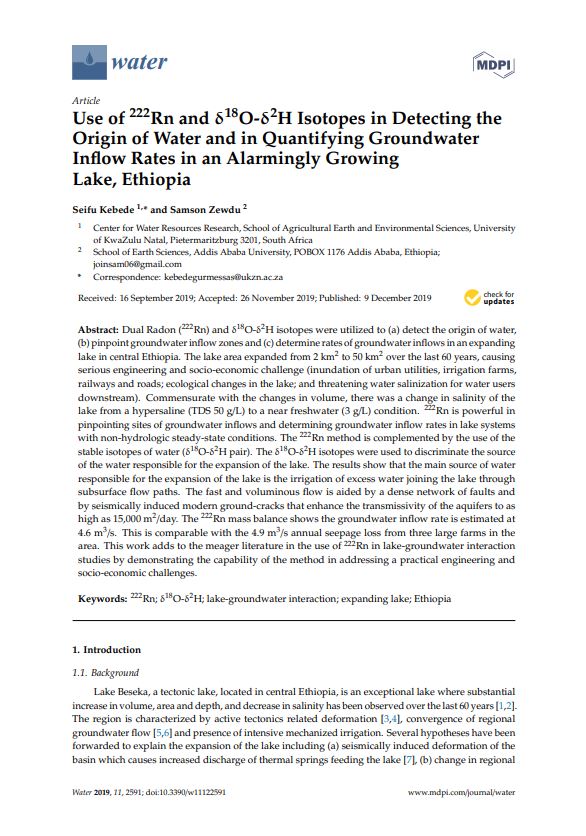Authors: Seifu Kebede and Samson Zewdu
Lake Beseka, located within Ethiopia’s Awash Basin, has expanded from 2 km2 to 50 km2 over the last 60 years, causing serious engineering and socio-economic challenge (inundation of urban utilities, irrigation farms, railways and roads; ecological changes in the lake; and threatening water salinization for water users downstream). This study used Dual Radon (222Rn) and δ18O-δ2H isotopes to (a) detect the origin of water, (b) pinpoint groundwater inflow zones and (c) determine rates of groundwater inflows in an expanding lake in central Ethiopia.

